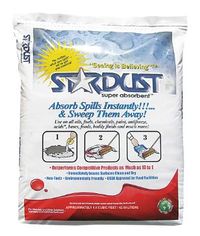سيليكا-ألومينا لابلورية
سيليكا-ألومينا لابلورية Amorphous silica alumina هي مادة اصطناعية تُستخدم كعامل مساعد أو داعم لعامل مساعد.[1] It can be prepared in a number of ways for example:[1]
- Precipitation of hydrous alumina onto amorphous silica hydrogel
- Reacting a silica sol with an alumina sol
- Coprecipitation from sodium silicate / aluminium salt solution
Water-soluble contaminants, e.g. sodium salts, are removed by washing.[1]
Some of the alumina is present in tetrahedral coordination as shown by NMR studies 29Si MASNMR and 27Al NMR [2]
Amorphous silica-alumina contains sites which are termed حامض برونستد (or protic) sites, with an ionizable hydrogen atom, and Lewis acid (aprotic), electron accepting sites and these different types of acidic site can be distinguished by the ways in which, say, pyridine attaches. On Lewis acid sites it forms complexes and on the Brønsted sites it adsorbs as the pyridinium ion.[3]
Examples of processes that use silica-alumina catalysts are the production of pyridine from crotonaldehyde, formaldehyde, steam, air and ammonia[4] and the cracking of hydrocarbons,[1]
. . . . . . . . . . . . . . . . . . . . . . . . . . . . . . . . . . . . . . . . . . . . . . . . . . . . . . . . . . . . . . . . . . . . . . . . . . . . . . . . . . . . . . . . . . . . . . . . . . . . . . . . . . . . . . . . . . . . . . . . . . . . . . . . . . . . . . . . . . . . . . . . . . . . . . . . . . . . . . . . . . . . . . . .
المراجع
- ^ أ ب ت ث Julius Scherzer, Adrian J. Gruia, (1996), Hydrocracking Science and Technology, CRC Press, ISBN 0-8247-9760-4
- ^ Nuclear magnetic resonance study of the dealumination of an amorphous silica–alumina catalyst, Pascal P. Man, Marie Jeanne Peltre and Denise Barthomeuf, J. Chem. Soc., Faraday Trans., 1990, 86, 1599 - 1602, DOI:10.1039/FT9908601599
- ^ Dale L. Perry, 1992, Applications of Analytical Techniques to the Characterization of Materials: proceedings of a symposium on applications of analytical techniques to the characterization of materials, held August 29–30, 1990, American Chemical Society Division of Industrial and Engineering Chemistry, Dale L. Perry, Springer, ISBN 0-306-44189-6
- ^ John Arthur Joule, Keith Mills, 2000, Heterocyclic Chemistry, 4th edition, Blackwell Publishing, ISBN 0-632-05453-0
